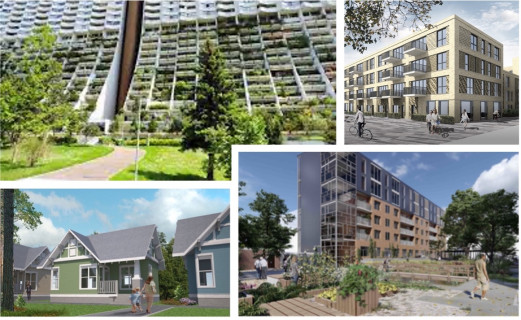This is the 15th episode of a series 25 building blocks to create better streets, neighbourhoods, and cities. This post is about one of the most serious threats to the quality of the living environment, namely the scarcity of housing, which is also unaffordable for many.
In many countries, adequate housing has become scarcer and too expensive for an increasing number of people. Unfortunately, government policy plays an important role in this. But good policy can also bring about a change. That's what this post is about.
As in many other developed countries, for a large part of the 20th century, the Dutch government considered it as its task to provide lower and middle classes with good and affordable housing. Housing associations ensured the implementation of this policy. Add to this well-equipped neighborhood shopping centers, ample medical, social, educational and transportation facilities and a diverse population. When the housing shortage eased in the 1970s, the nation was happier than ever. That didn't take long.
The emergence of market thinking in housing policy
During the last decades of the 20th century, the concern for housing largely shifted to the market. Parallel to this, housing corporations had to sell part of their housing stock. Mortgages were in easy reach and various tax facilities, such as the 'jubelton' and the mortgage interest deduction, brought an owner-occupied home within reach of many. In contrast, the waiting time for affordable rental housing increased to more than 10 years and rental housing in the liberalized zone became increasingly scarce and expensive. In Germany and Austria, providing good housing has remained a high priority for the government and waiting times are much shorter. The photo at the top left part shows the famous housing project Alt Erla in Vienna. Bottom shows left six affordable homes on the surface of one former home in an American suburb and top right is the 'Kolenkit', a social housing project in Amsterdam.
The explosive rise in housing costs
In order to adapt housing cost to the available budget, many people look for a house quite far away from the place where they work. Something that in turn has a negative effect on the travel costs and the time involved. Others settle in a neighborhood where the quality of life is moderate to poor or rent a too expensive house. More than a million households spend much more than the maximum desirable percentage of income (40%) on housing, utilities, and transport.
Between 2012 and 2022, the average price of a home in the Netherlands rose from €233,000 to €380,000. In Amsterdam, the price doubled from €280,000 to €560,000. Living in the city is becoming a privilege of the wealthier part of the population.
It is often assumed that around 900,000 housing units will be needed in the Netherlands by 2030, of which 80% is intended for single-person households.
An approaching change?
It seems that there is a shift going on, at least in policy thinking. The aim is to build an average of 100,000 homes per year in the coming years and to shorten the lead time between planning and realization. Achieving these intentions is uncartain because construction is being seriously delayed by the nitrogen crisis. The slow pace of new construction has once again drawn attention to the possibility of using existing houses and buildings for a significant proportion of these new housing units. More so as it is estimated that 80% of demand comes from single-person households.
The existing housing stock offers large potential for the creation of new living spaces. This potential has been investigated by, among others, the Kooperative Architecten Werkplaats in Groningen, resulting in the report <em>Ruimte zat in de stad</em>. The research focuses on 1800 post-war neighbourhoods, built between 1950 and 1980 with 1.8 million homes, 720,000 of which are social rental homes. The conclusion is that the division and expansion of these homes can yield 221,000 new units in the coming years. Eligible for this are single-family houses, which can be divided into two, and porch apartment blocks, which can be divided into more units per floor. Dividing up existing ground-access homes and homes in apartment blocks is technically not difficult and the costs are manageable. This applies even more if the adjustments are carried out in combination with making the relevant homes climate neutral. In addition, huge savings are made on increasingly expensive materials.
Even more interesting is to combine compaction with topping. This means the addition of one or two extra floors, so that a lift can also be added to the existing apartments. In construction terms, such an operation can be carried out by using light materials and installing an extra foundation. A project group at Delft University of Technology has designed a prototype that can be used for all 847,000 post-war porch houses, all of which need major maintenance. This prototype also ensures that the buildings in which these homes are located become energy-neutral and include facilities for socializing and play. Hence the extra wide galleries, with stairs between the floors and common areas in the plinth (image below right).
Follow the link below to find an overview of all articles.





